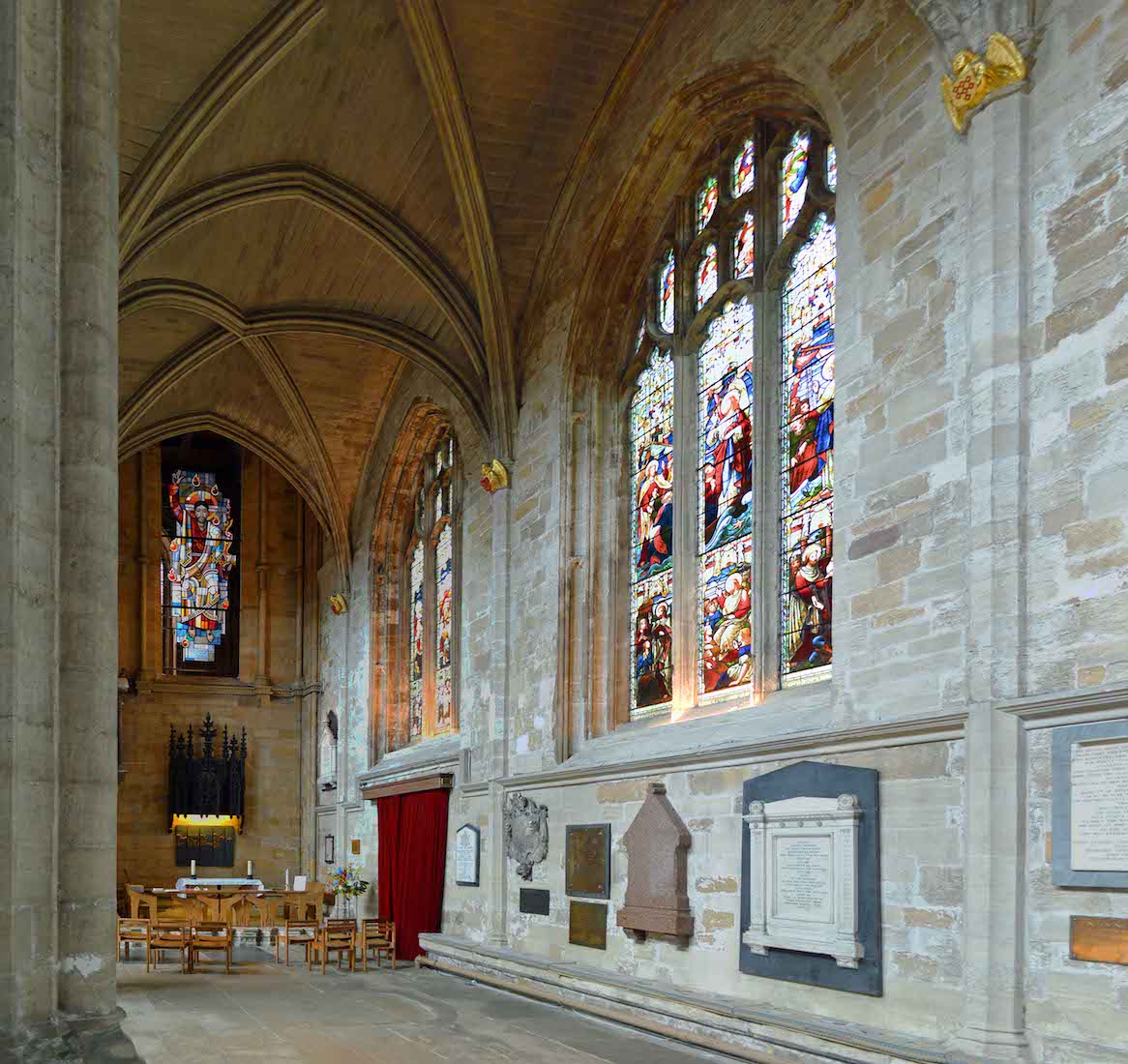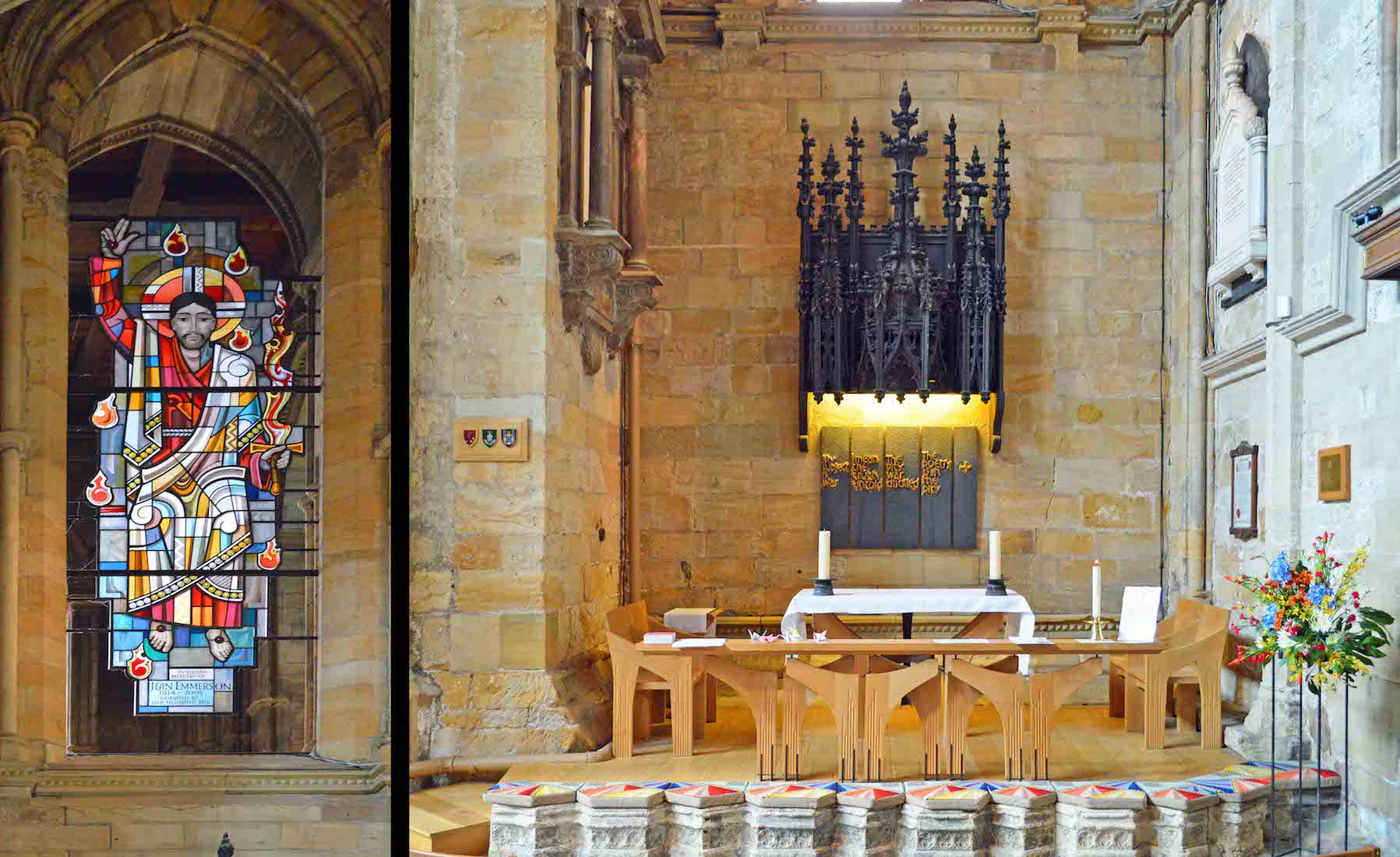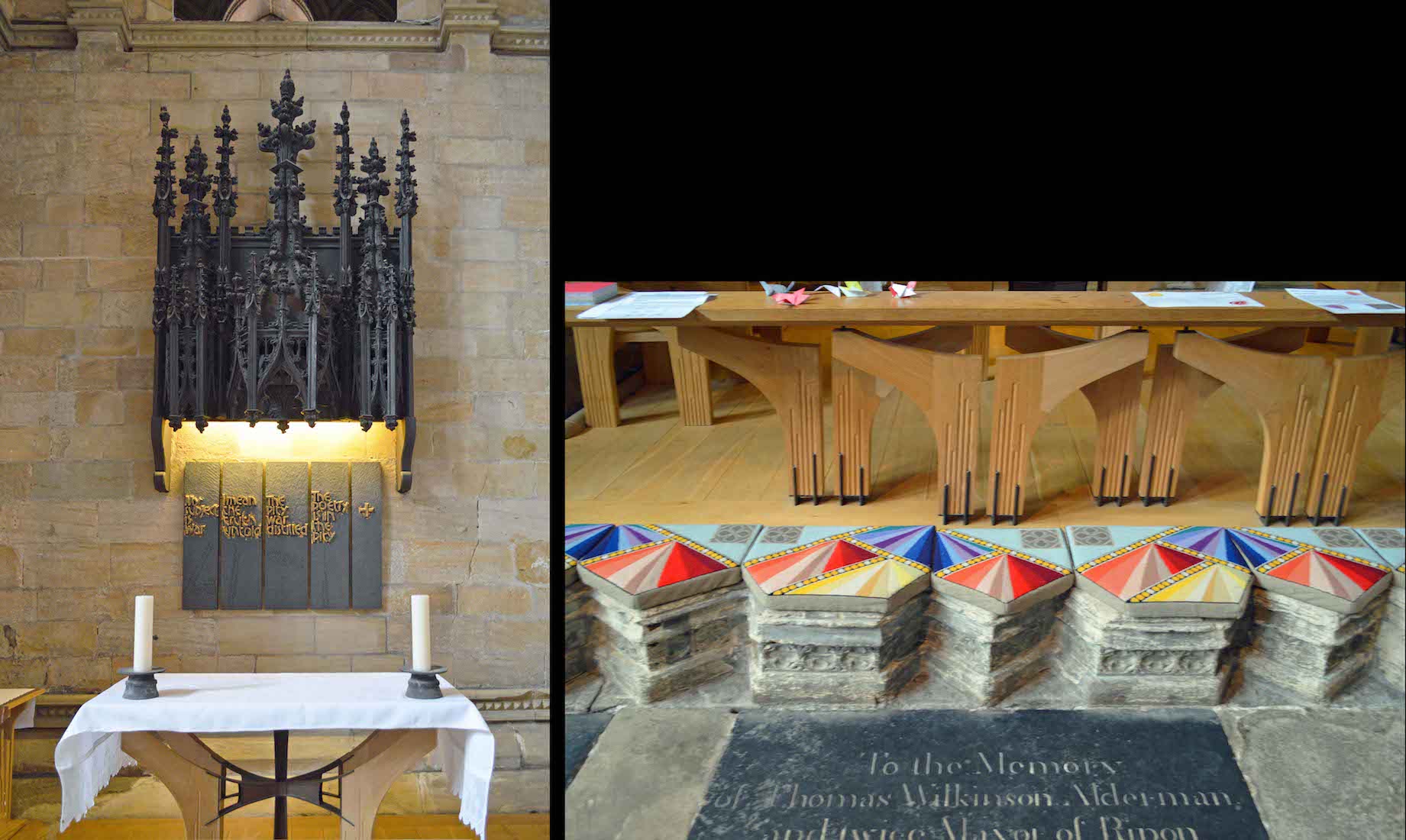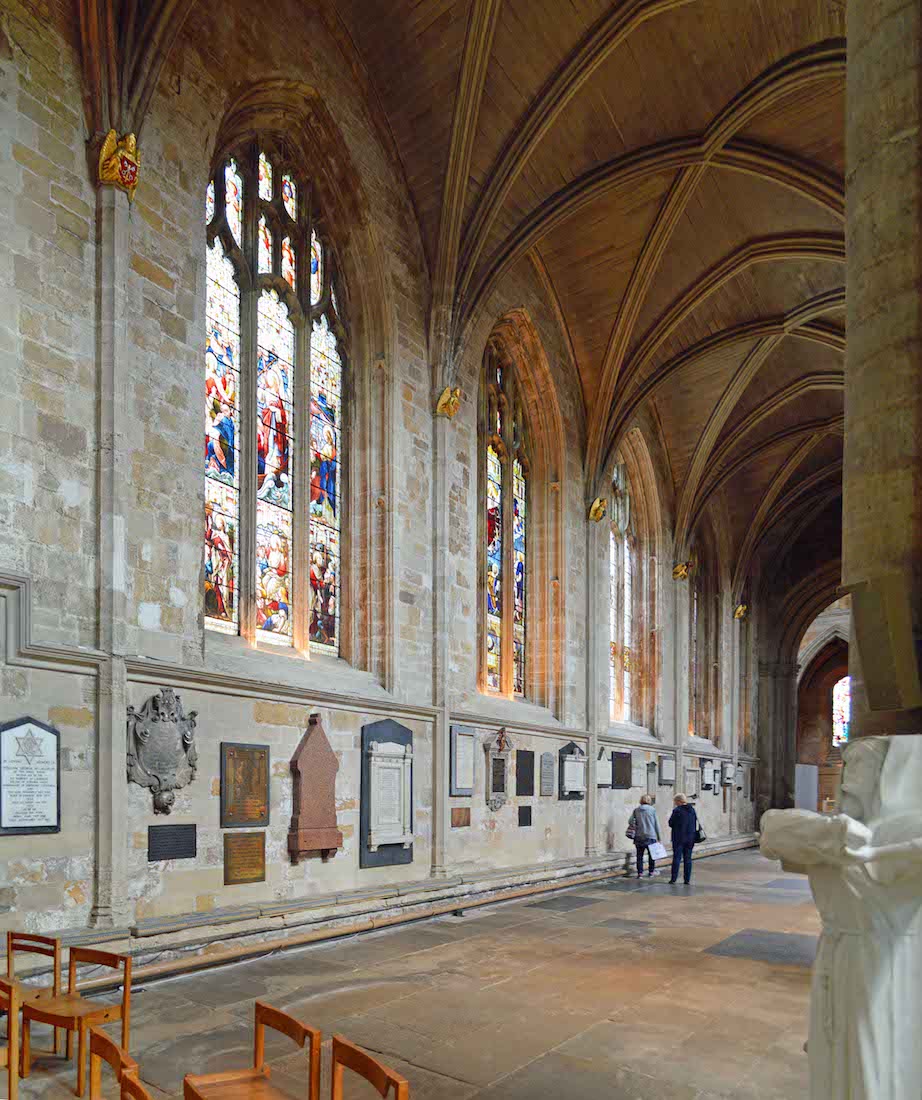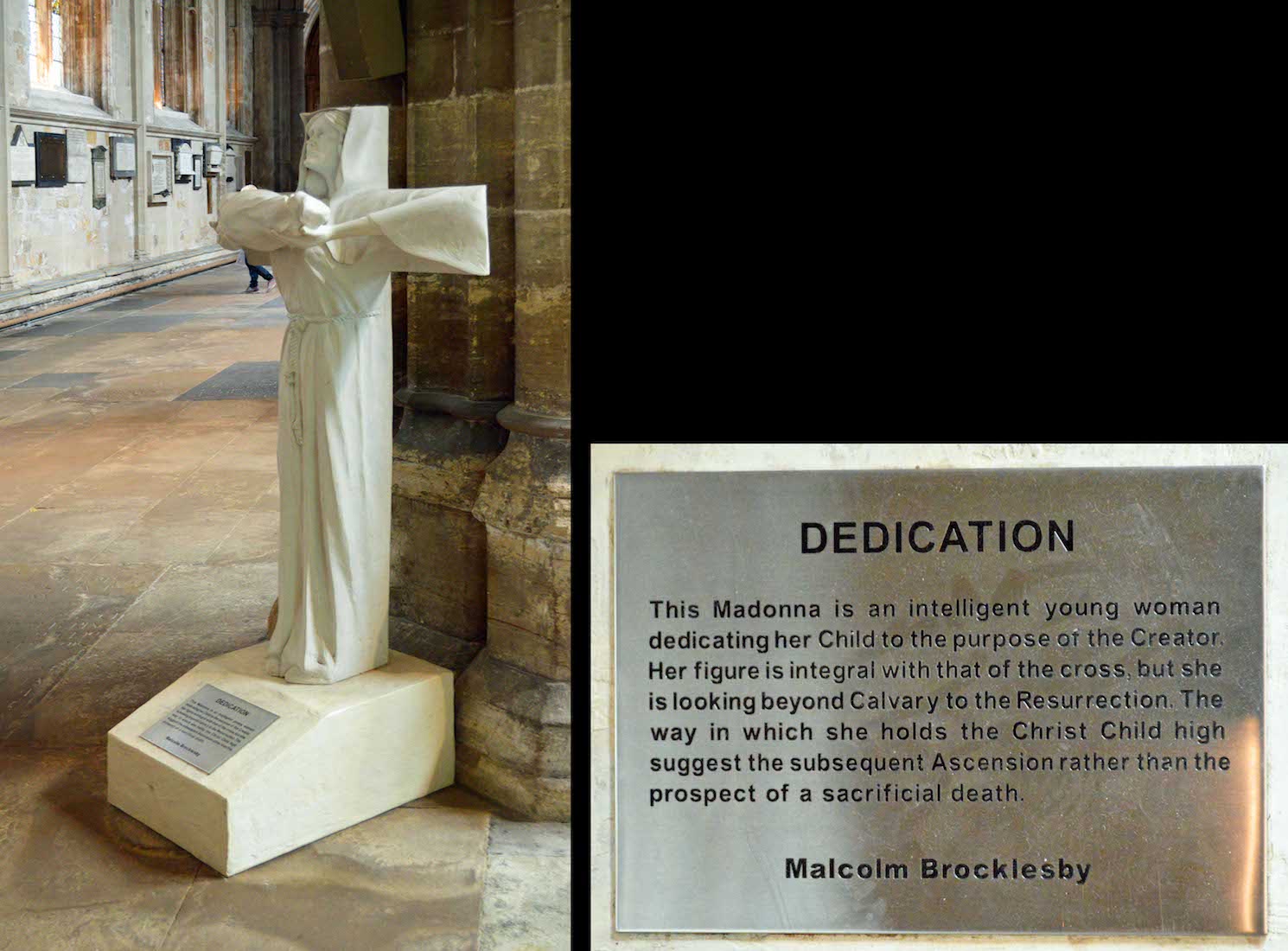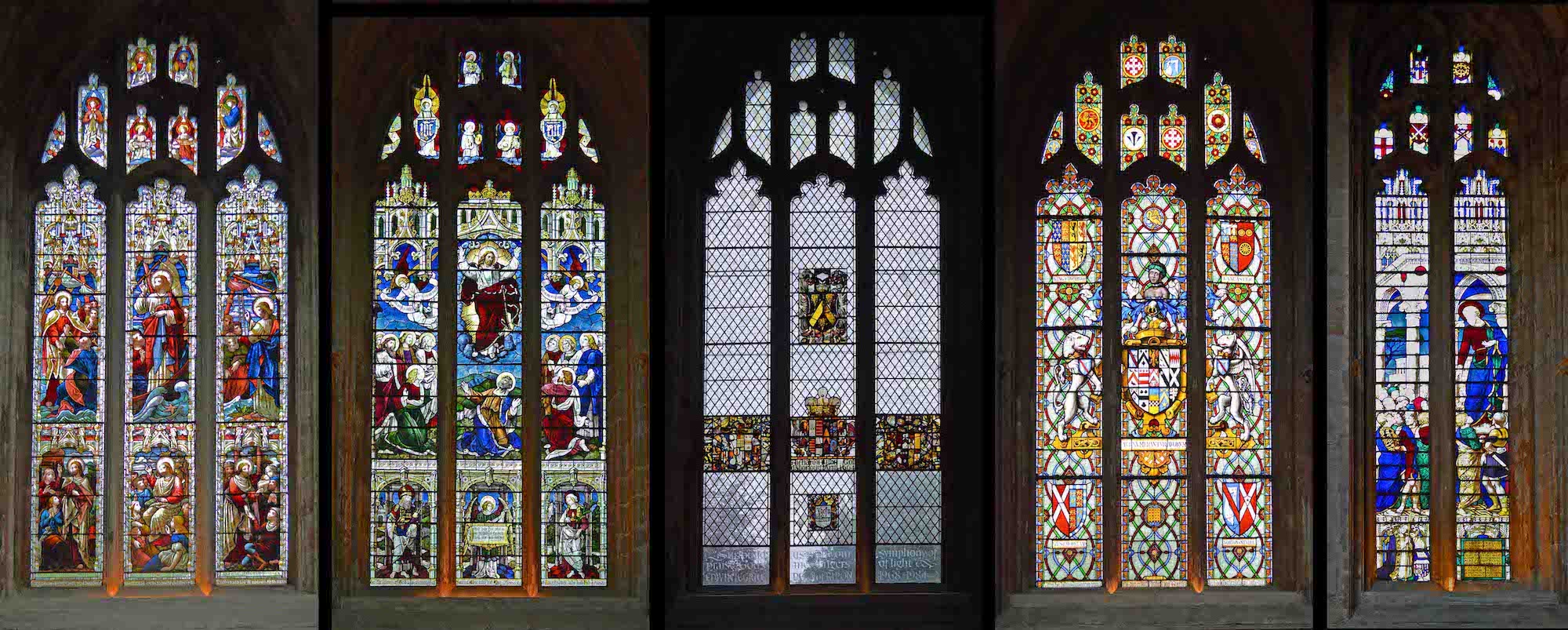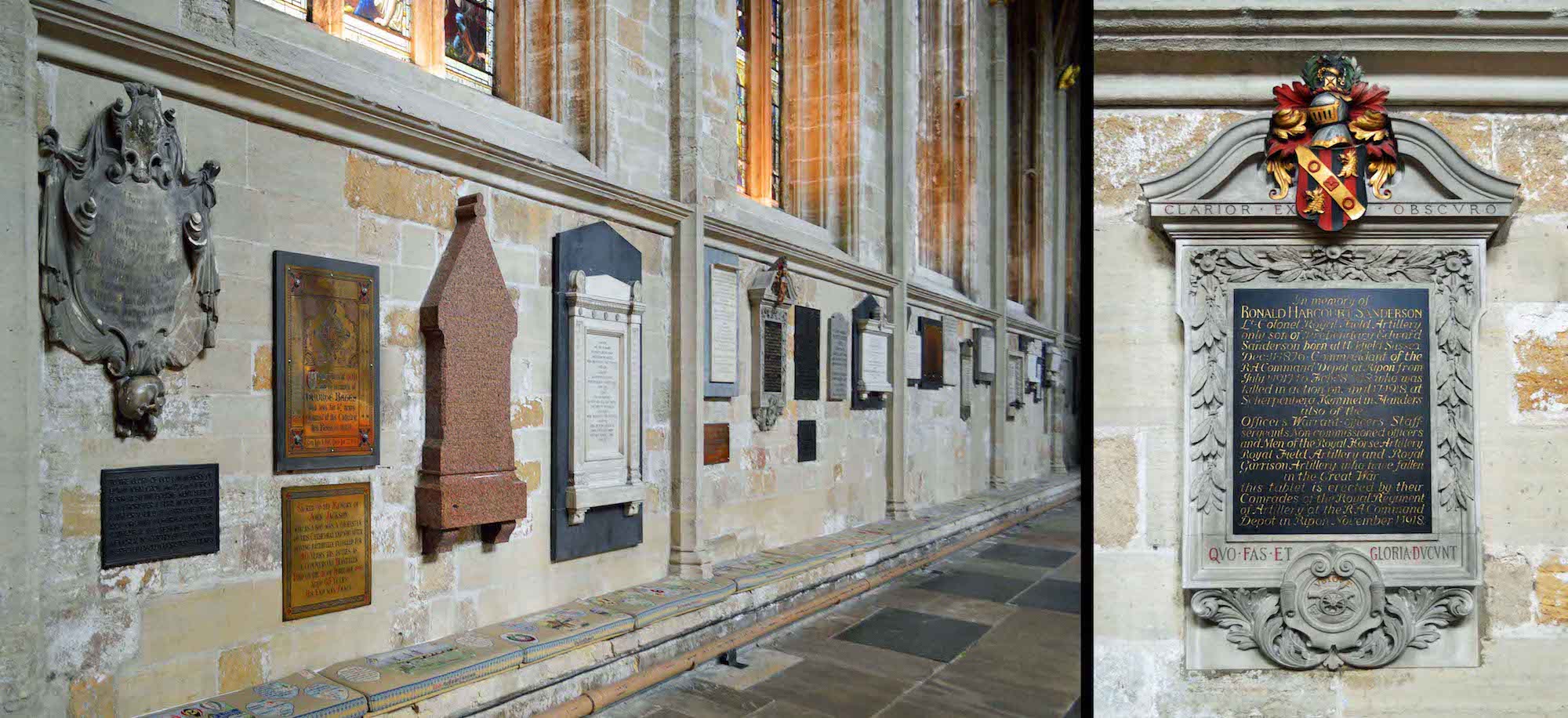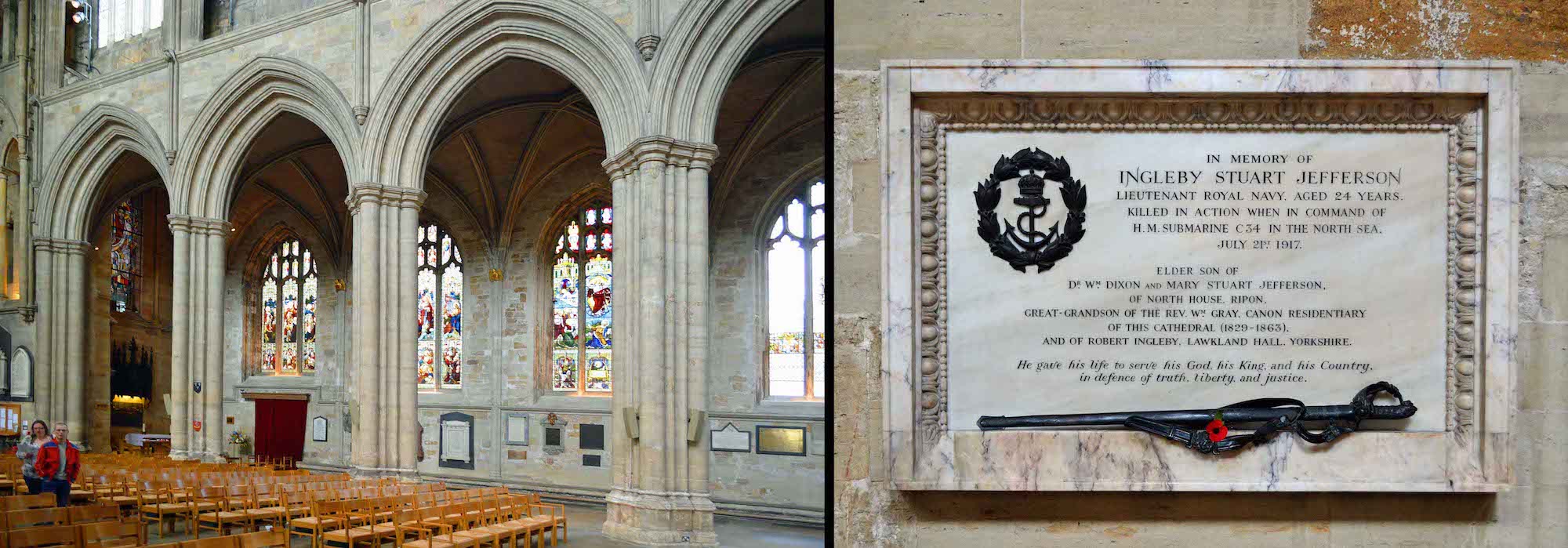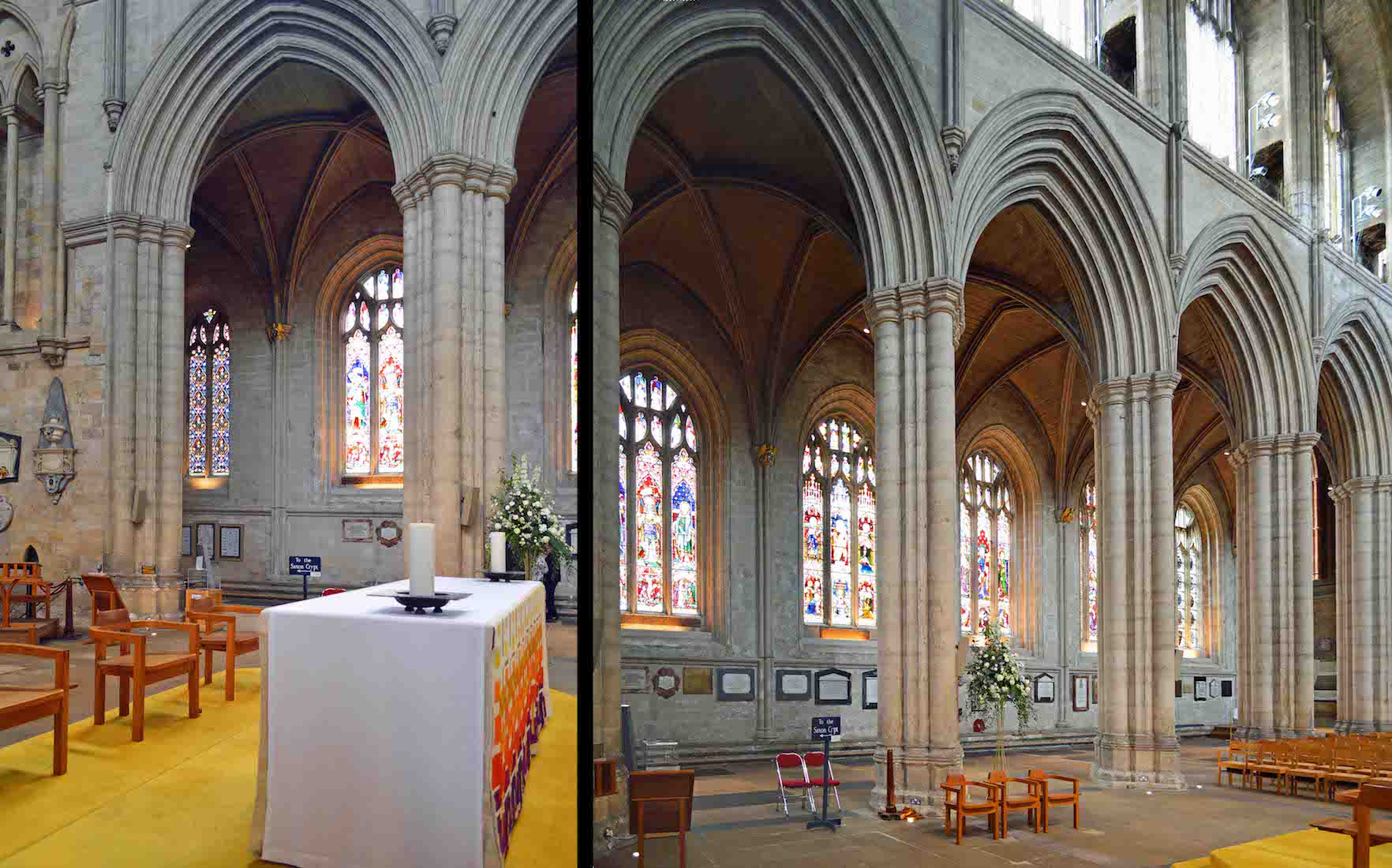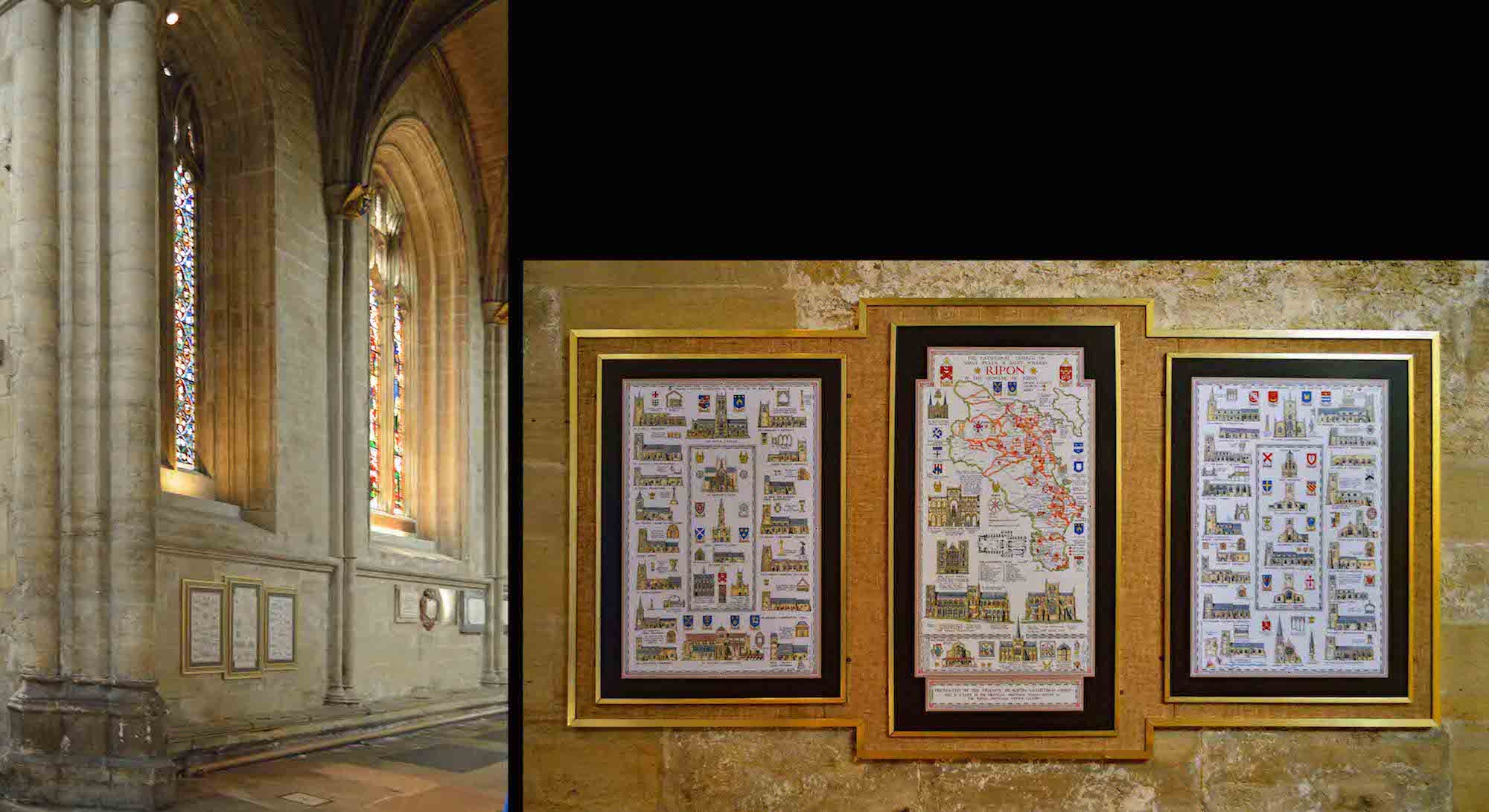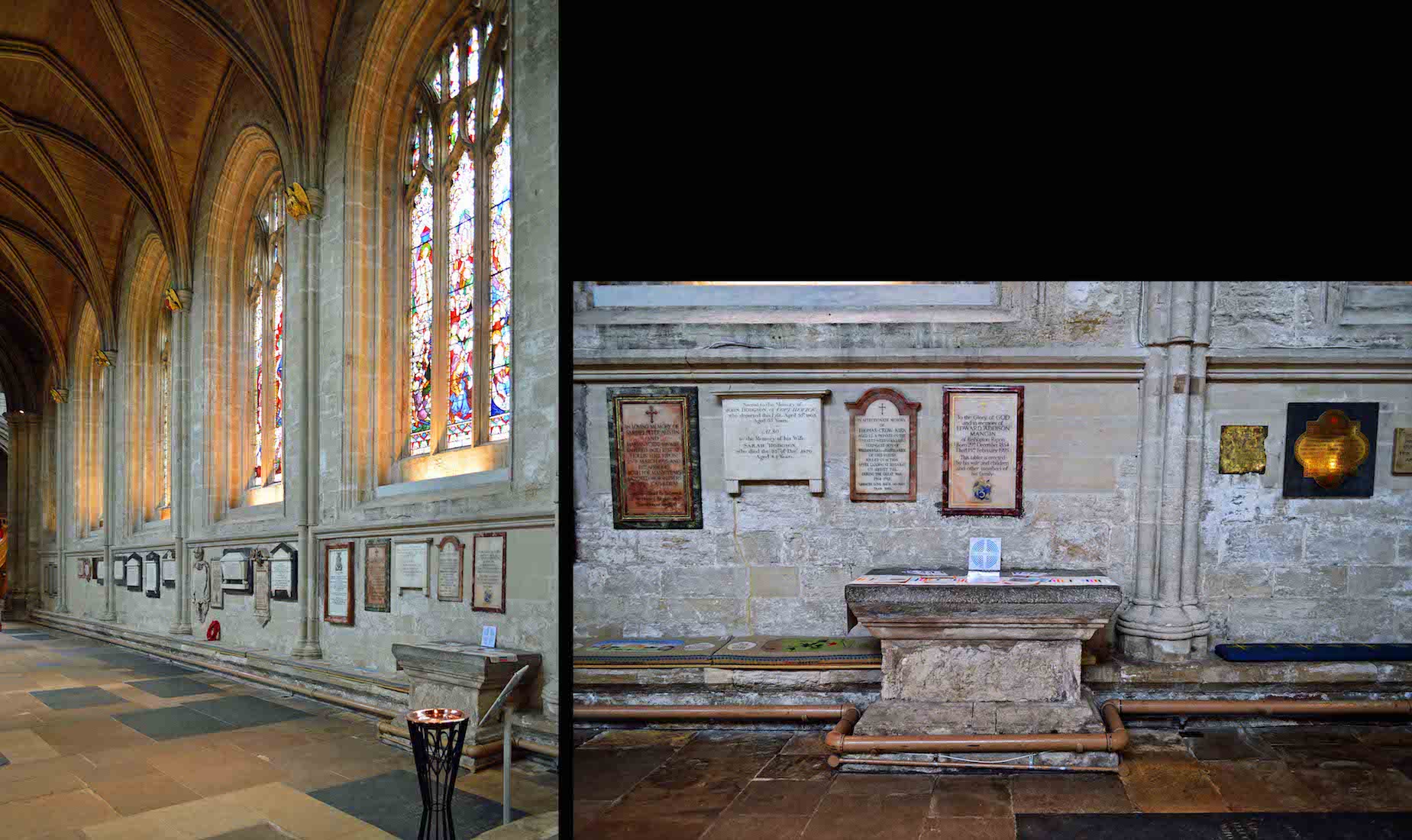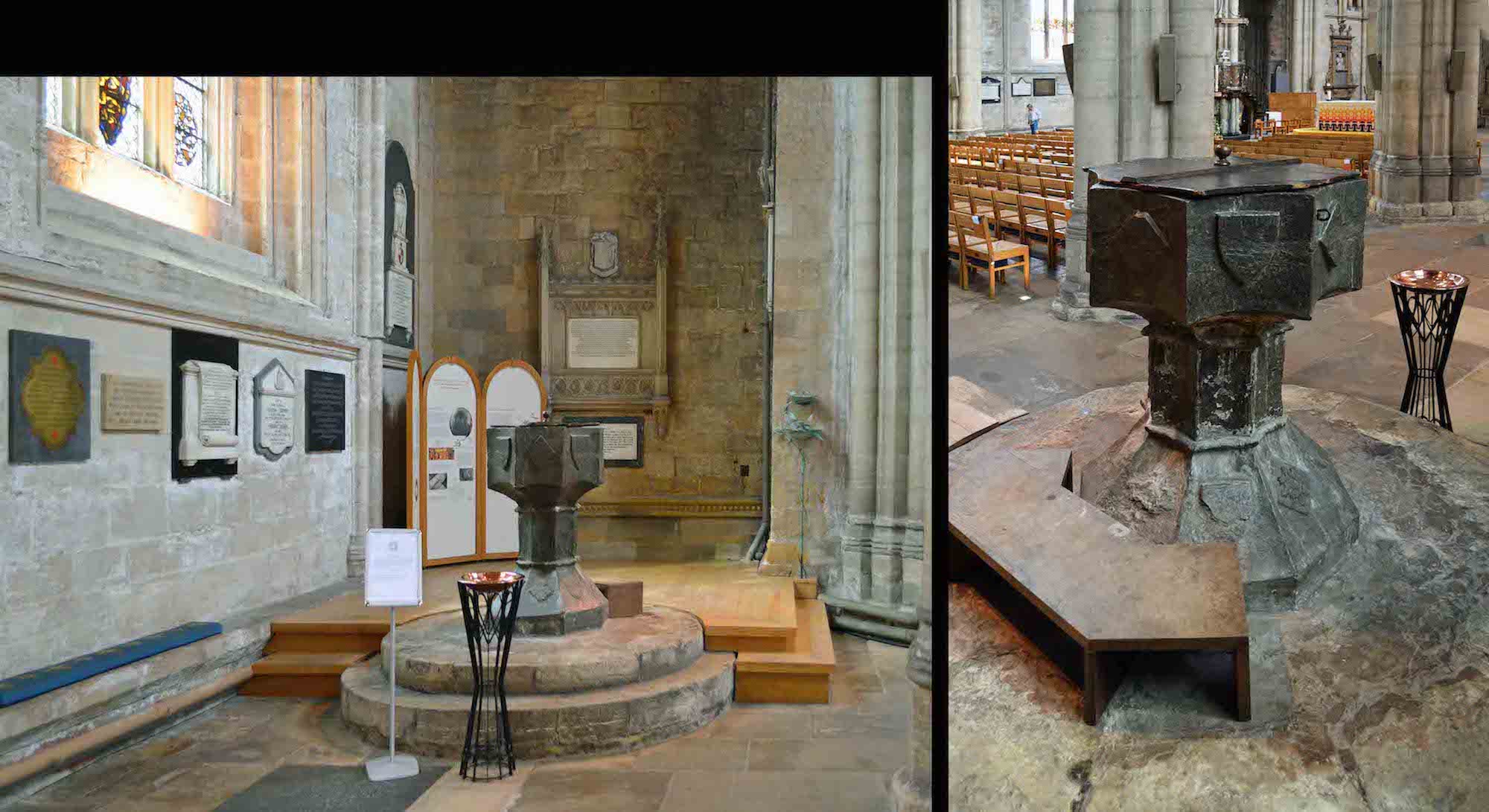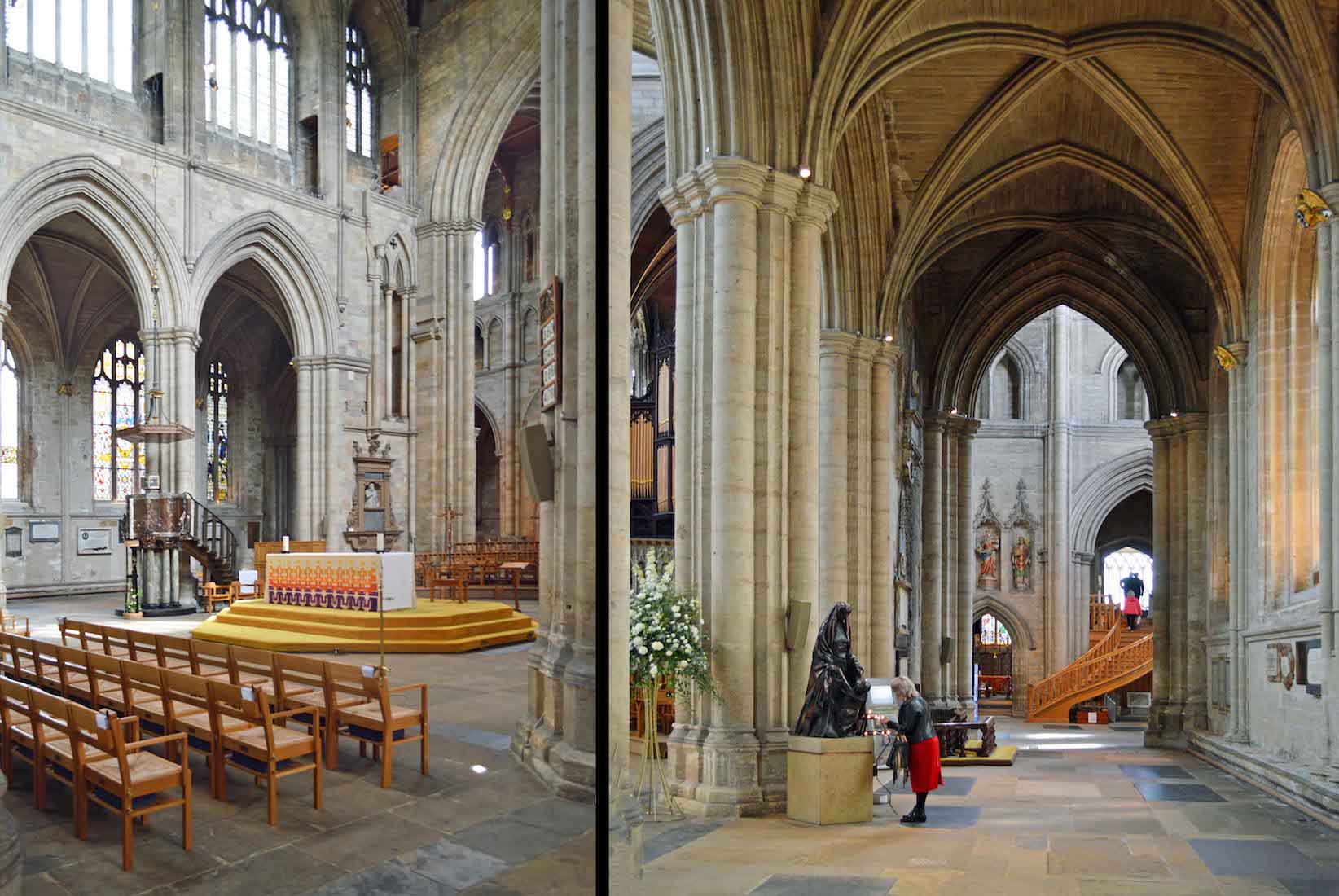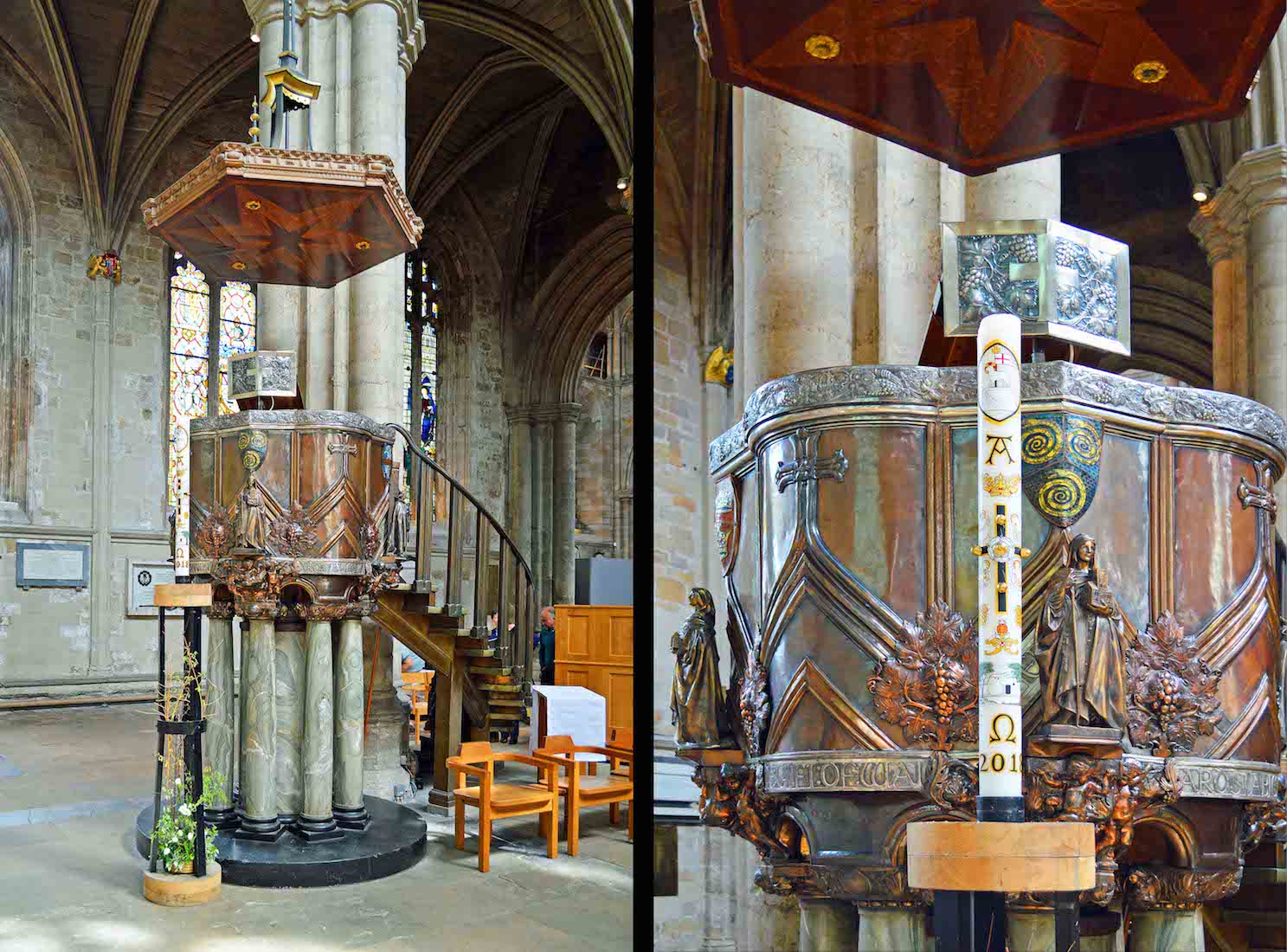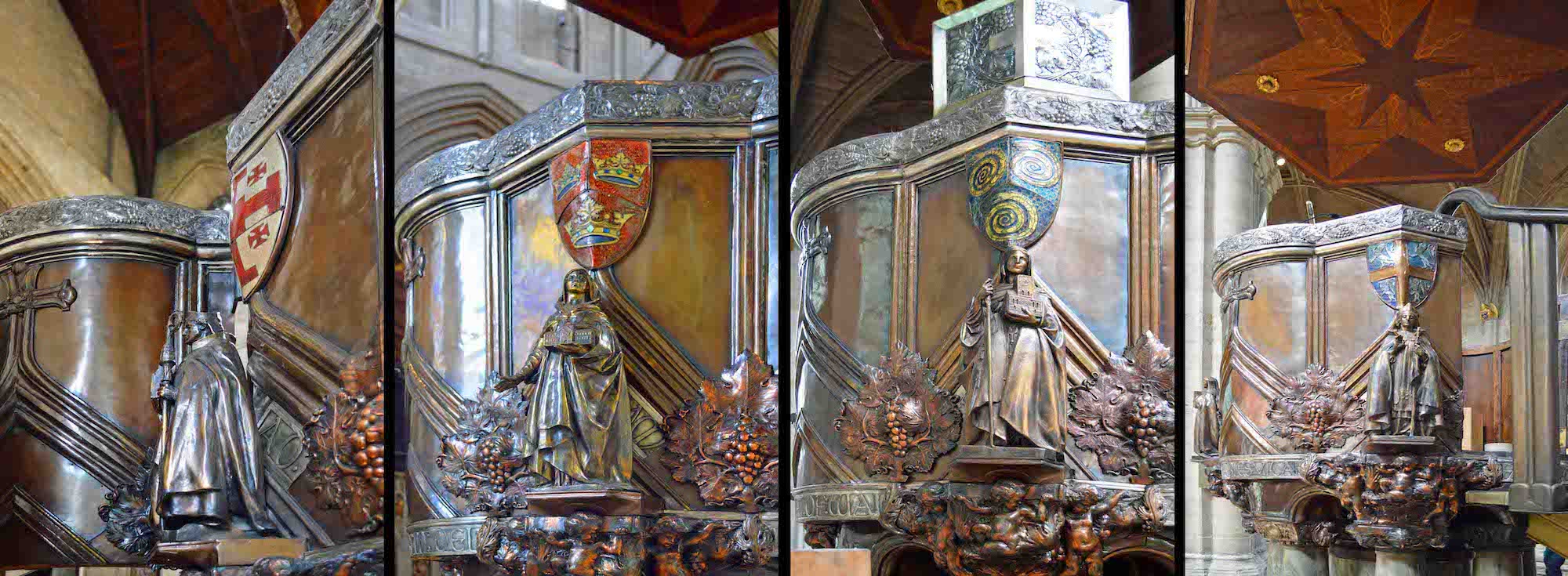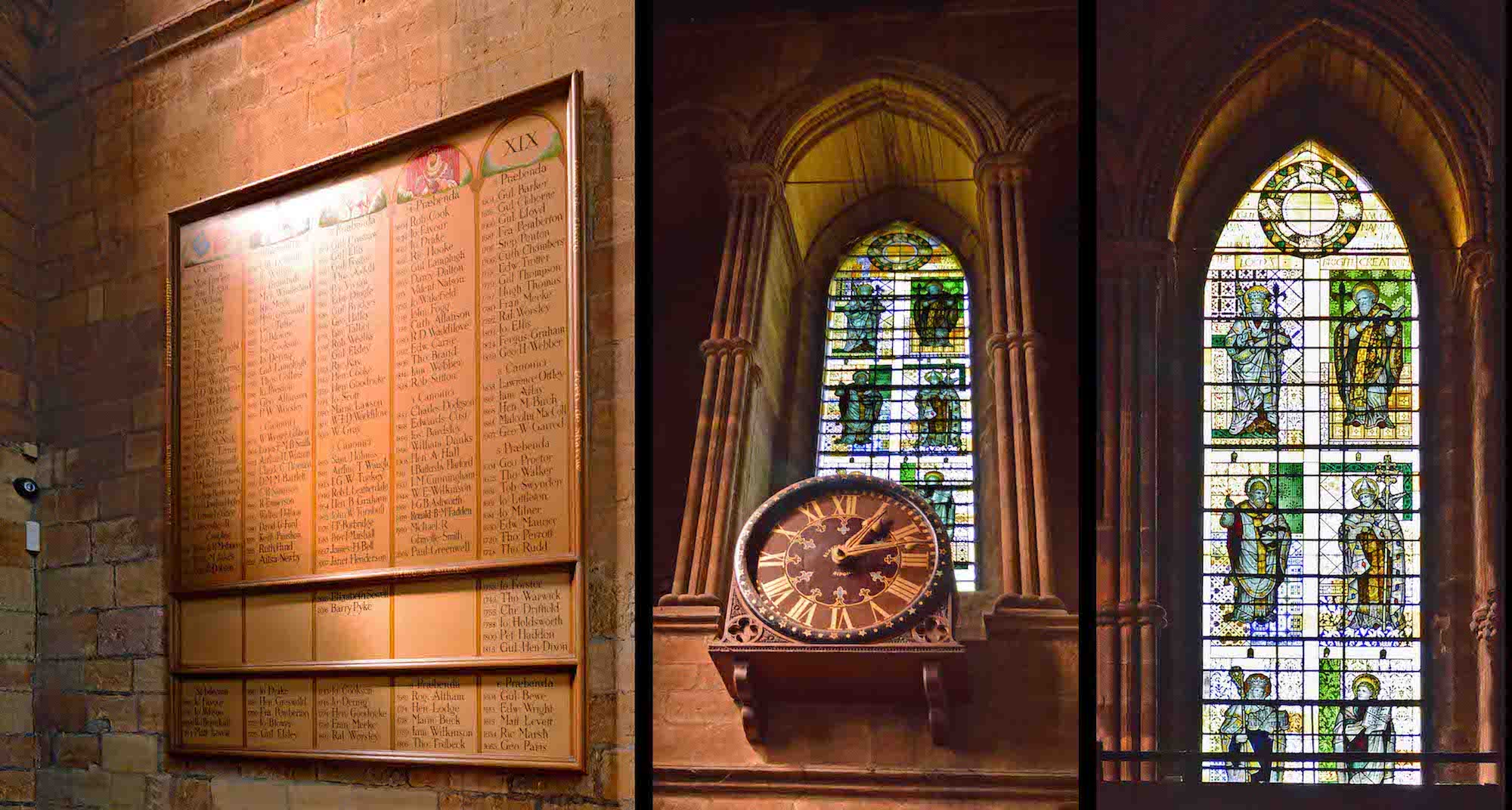
The South tower room was largely being used as a storage room for excess Cathedral chairs – a problem faced by most cathedrals! On the West wall is a large panel with a list of names of people who have held Church office. Next to it is a stained glass window with a clock below it. At the top is the text: ‘Light was then through the Lord’s Word named day: beauteous bright creation’. PLAN
22. WALLS OF SOUTH TOWER ROOM
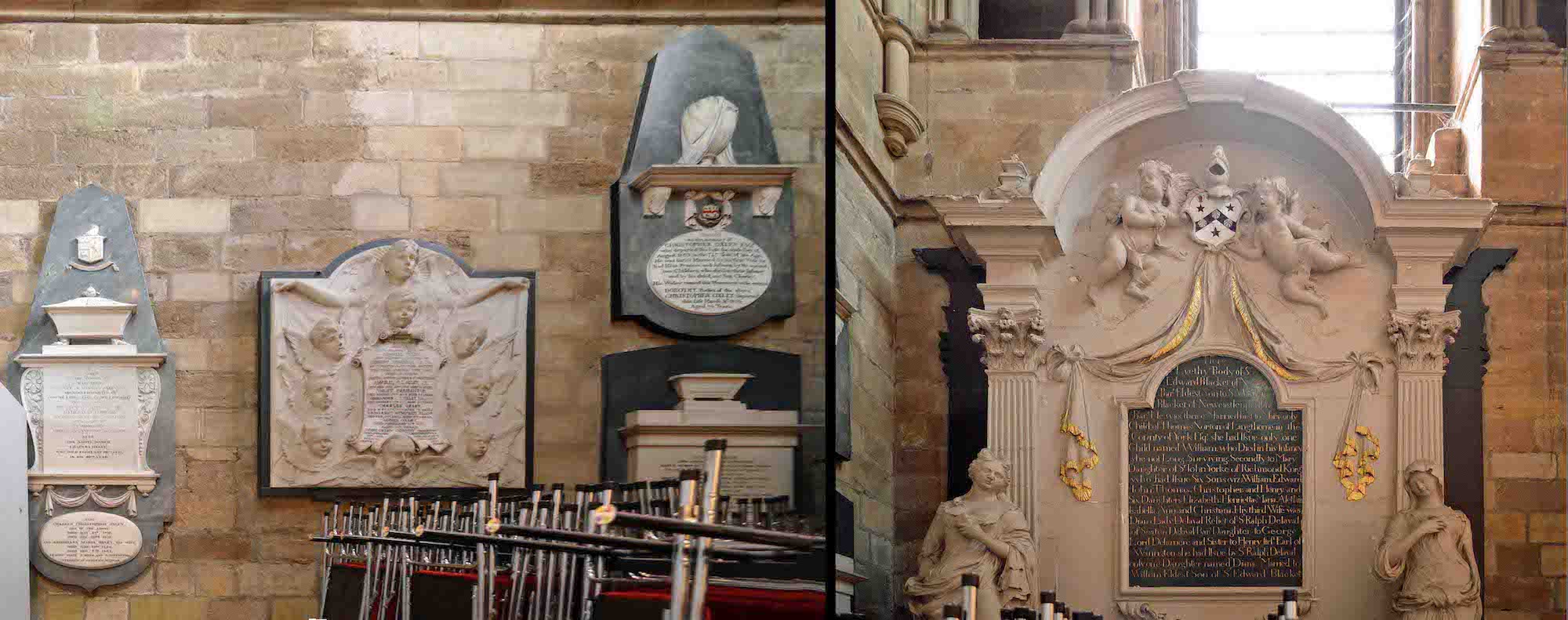
The East and South walls of the South tower room have memorials to Sir Edward Blackett and Admiral Oxley, and members of their families. The South tower contains thirteen bells hung in a lowside cast iron frame - designed for ten bells in 1933 and adapted for thirteen in 2008. There is also a single bell in the central tower which is fitted with an electric internal tolling hammer.
23. CHAPEL OF JUSTICE AND PEACE
We now leave the tower rooms, and re-enter the nave. Moving to the North aisle and looking back we find a chapel with an altar, and a window above it which I found the source of some mystery! The Chapel (2006) is built upon the 13th century stone plinth of the consistory court at the West end of the North aisle and provides a quiet space for reflection and prayer. .
24. WINDOW AND CHAPEL
The stained glass window was funded by Mr A W Emmerson in memory of his wife Jean. The stained glass is suspended in a metal framework within the arch between the aisle and Northwest tower. Carefully designed lighting creates a glow of light within the tower space that gives the impression of daylight flooding in. Mystery solved! The window shows Christ bringing fire – the symbol of His Holy Spirit – to the earth. See Luke 12:49.
25. CHAPEL ALTAR AND KNEELERS
The text behind the altar reads: ‘The subject is war // I mean the truth untold // The pity was distilled // The poetry is in the pity. + ’ Colourful geometric cushions mark the edge of the old plinth.
26. CHAPEL KNEELERS AND NORTH WINDOW
Here we have another view of the colourful cushions, and the window in the North wall of the nave. In this window, the central scenes show Jesus healing, Jesus with the children, and Jesus teaching. Below, the central frame shows the Presentation of the baby Jesus at the Temple, and on either side, perhaps Hannah and Samuel, and Elizabeth teaching John the Baptist?
27. NAVE NORTH AISLE
Looking down the North nave aisle, we see five further stained glass windows, and a series of memorial tablets underneath. At right, in the foreground, is a marble statue.
28. DEDICATION
The marble statue is called ‘Dedication’, and is by Malcolm Brocklesby. It depicts the Madonna dedicating her Child to God. The figure is cleverly incorporated into the shape of the Cross. The creator suggests that she is looking beyond Calvary to the Resurrection, and even to the Ascension, in the way she holds her Child.
29. NAVE NORTH WINDOWS
Shown here are the remaining five windows of the North nave. It is curious that the window at right is narrow: the nave fell down around 1500, and perhaps the reconstruction did not go according to plan! From left we have: • scenes from the life of Jesus; • the glorification of Christ; • various inserted panels with text at bottom: ‘Surround us with your symphony of praise, God’s messengers of light’; • various coats of arms; • Paul preaching in Athens.
30. NAVE NORTH MEMORIALS
The memorial tablets along this wall commemorate various people who have been associated with the Cathedral, and also people who have given their lives in battle for their country. Below the memorials is a long low bench with kneeler cushions.
31. LOOKING BACK
From near the nave altar we can look back along the North nave aisle. Lieutenant Ingleby Stuart Jefferson gets a plaque with a special sword in memory of his sacrifice in 1917.
32. ACROSS TO THE SOUTH SIDE
We move across past the altar to explore the South nave aisle. This looks to be a repeat in layout of the North aisle: stained glass windows with memorials below, an unexpected small window near the crossing, and a long low bench with kneelers.
33. NAVE SOUTH WINDOWS
There are six stained glass windows along this side of the nave. From left they show: • a repeated floral pattern; • warrior ‘Oonuj (?), St Michael and St David; • Presentation of Christ at the Temple; • Faith, Hope and Charity; • three scenes from the life of Christ; • 15 roundels with various themes. This last window contains reassembled fragments from the 14th century East window which was smashed by Cromwell’s soldiers in 1643.
34. CORNER OF SOUTH TRANSEPT AND NAVE
Where the South nave aisle meets the South transept there is an interesting display of three boards depicting the Ripon Diocese. There is a map of the Diocese, and pictures of all the churches which belong. PLAN
35. NAVE SOUTH AISLE
This is a view of the South aisle from the West end, together with some of the memorials. One wonders about the original purpose of the old stone table.
37. ALTAR, PULPIT, SOUTH AISLE
From the font corner we can look back across the nave to the pulpit and altar, and down the South aisle where there is a dark statue of the Madonna.
38. PULPIT AND PASCHAL CANDLE
The pulpit was made by Henry Wilson in 1913. It stands on green marble legs, and around the sides are bronze images of four important Anglo-Saxon saints with their shields finished in enamel. Close by is the Paschal candle – symbol of Jesus being the Light of the World.
39. PULPIT DETAILS
The four pulpit saints are: St Chad (monk of Lindisfarne and bishop of Lichfield – crosses); • St Cuthbert (bishop of Lindisfarne – lions); • St Hilda (abbess of Whitby – snakes); • and St Etheldreda (Northumbrian queen and founder of the abbey at Ely – crown). All four were contemporaries of St Wilfrid.


